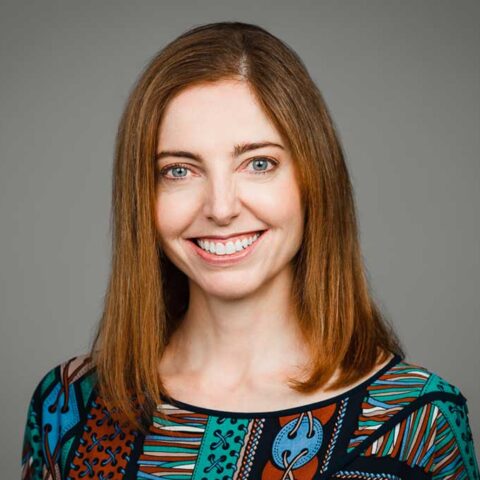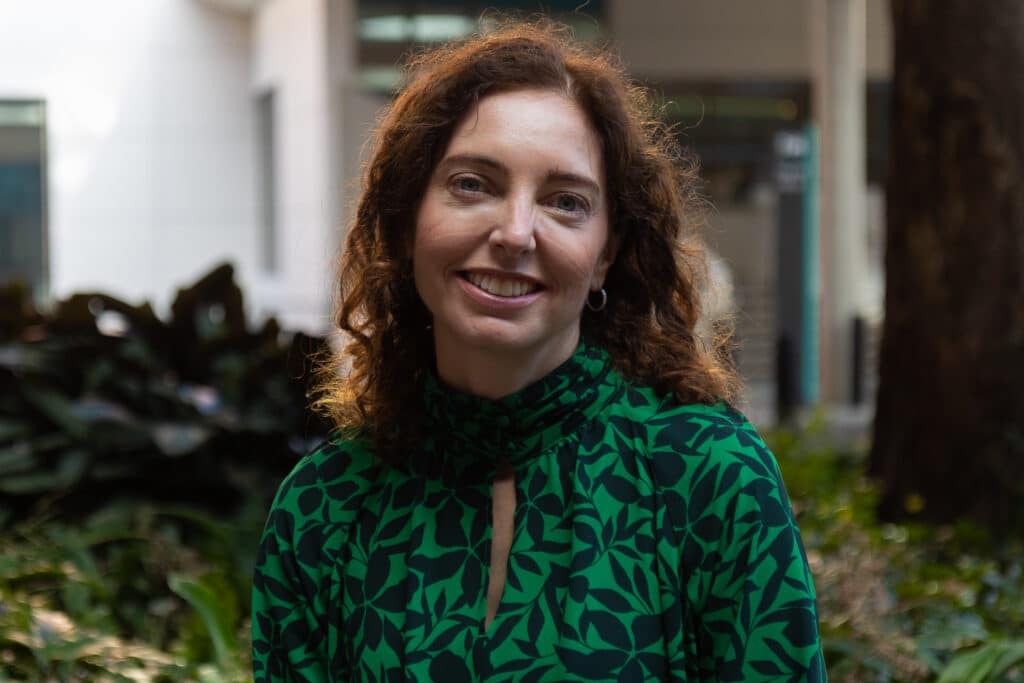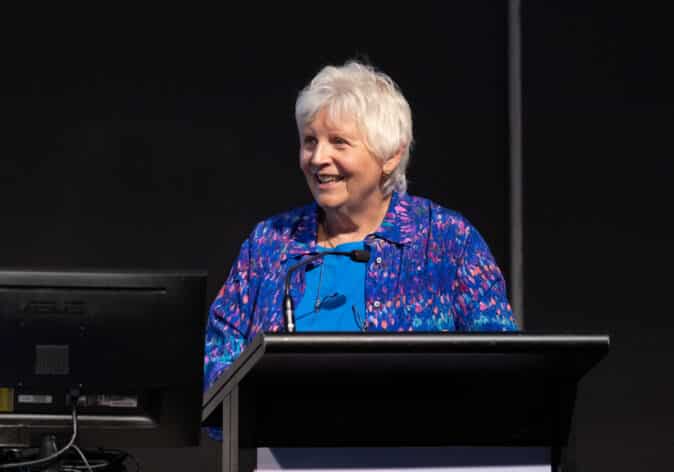About the OPTIMA-Young Clinical Trial
Young women with breast cancer often face unique challenges beyond their diagnosis, including long-term survivorship issues, fertility and family planning concerns, and a higher likelihood of aggressive cancers, but are there treatment pathways keeping up?
Dr Belinda Kiely explains the groundbreaking OPTIMA Young trial, part of the larger Path-for-Young Initiative that’s exploring how global collaboration could change the future of treatment for younger patients.
“The OPTIMA study, the main study has been running now for many years internationally, and it’s looking at whether a multi-gene assay called Prosigna can be used to help determine which women really need chemotherapy, and which women can be spared chemotherapy as treatment for their breast cancer.”
“And that study is open to people from the age of 40 and over. The study is trying to prove that the use of the Prosigna test is non-inferior to standard treatment where everybody gets chemotherapy and endocrine therapy, and that study is expected to produce results probably in the next year or two.”
“There will be some premenopausal women in that study, but it’s probably only going to be about a third of the population, so it will only be a subgroup. The study won’t really be able to answer with significant power the question of whether this test-based approach of doing the Prosigna is safe in premenopausal women.”
“What Path-for-Young is trying to do is answer that question, is it safe to use a test to select premenopausal women who can be spared chemotherapy? The premenopausal women who have been recruited to the OPTIMA study over the last several years will be included along with an extension of the OPTIMA study, looking specifically at premenopausal women aged 18 to 55.”
“And then in Europe there’s going to be a separate OPTIMA-Young Study with similar eligibility criteria and a similar design where again, premenopausal women will be randomised to having a Prosigna test guided approach to their treatment or standard treatment. Path-for-Young is really the umbrella sort of putting all this together.”
“And it will be an international recruitment from Europe, from the United Kingdom and Australia will be participating in getting a large number, over 4,000 pre-menopausal women to really answer that question, can we select the women who really need chemotherapy and those that can be spared chemotherapy?”
“I think no one wants to have chemotherapy because it has a lot of side effects. Now, many of those side effects are short term, but there’s also some that are long term. And I think particularly for premenopausal women, the chemotherapy can have massive effects on things like their body image, losing their hair, but also the risk of early menopause infertility.”
“Often women are diagnosed with breast cancer when they’re in at a young age where they haven’t maybe completed their families or started their families. They haven’t yet found their sort of life partner. And I think having chemotherapy can really have a big impact on those things, and their ability to work and maintain their job. Chemotherapy can really make that difficult. I think for all women it’s important to try and make sure the people that get the chemotherapy really need it.”
“But I think particularly for those young women, if we can spare them some of these long-term risks and also those risks for fertility and early menopause, there’s benefits to be had.”
Listen to the podcast
Dr Belinda Kiely explains the ground-breaking OPTIMA-Young trial, part of the larger PATH-for-Young initiative, exploring how global collaboration could change the future of treatment for younger patients.

Key takeaways
-
Young women face unique challenges with breast cancer treatment – Beyond survival, chemotherapy poses long-term risks such as early menopause, infertility, body image issues, and work disruption, making it especially important to avoid unnecessary treatment in this group.
-
OPTIMA-Young and Path-for-Young trials aim to personalise treatment – These large-scale, international studies are testing whether the Prosigna multi-gene assay can safely identify which premenopausal women truly need chemotherapy versus those who can be spared.
-
Global collaboration is essential – Because premenopausal breast cancer is less common, recruiting nearly 5,000 patients requires a joint international effort across Europe, the UK, and Australia to generate strong, reliable evidence.
-
Potential shift toward personalised, less toxic care – If successful, OPTIMA-Young could establish a new standard of care where treatment decisions are guided by tumour biology rather than blanket chemotherapy, improving quality of life for many young women.
How does OPTIMA-Young differ from existing treatment approaches?
“I think the standard approach for young women with hormone receptor positive high risk breast cancer is that they all get chemotherapy and they all get endocrine therapy. There have been studies done looking at tests like the Prosigna test, predominantly in postmenopausal women showing that those women can be spared chemotherapy using one of these tests to select low risk. But we don’t yet have evidence that this is safe to do in premenopausal women.”
“And some of these studies have said that in premenopausal women, the chemotherapy is more important. What we don’t know is whether the chemotherapy benefit is coming from something the chemotherapy is doing in those young women or whether it’s related to the fact that many young women go into an early menopause from the chemotherapy, and it’s actually that early menopause that’s making the chemotherapy have the benefit in that group.”
Path-for-Young is being run in Europe, and OPTIMA-Young is being run globally. Why is it important to have an international collaborative approach?
“To really answer this question, you’re going to need almost 5,000 patients, and no one country could do that. I guess in general, most breast cancer still happens in women who are postmenopausal. The premenopausal population with hormone positive breast cancer is a small group.”
“To get that 5,000 patients, To be able to really answer this question, it needs to be a joint effort. So, I think this Path-for-Young program is incredible how it is bringing together doctors and patients from across the globe. It is going to be Europe, it is going to be the UK, it is going to be Australia, and I think that’s going to be really important to help answer this question once and for all.”
“I think it’s going to really make how we treat young women a lot more personalised and hopefully spare a lot of women the side effects of chemotherapy when they’re not going to benefit from the chemotherapy.”
How will findings from OPTIMA-Young potentially change the way we treat young breast cancer patients in the future?
“So, if we can show that doing a Prosigna test can select the patients that need chemotherapy and those that don’t. This will become standard of care. So, a new patient that comes to see me with a hormone receptor positive breast cancer, rather than me saying you need to have chemotherapy, I can do a test on their tumor and say based on the results of this test, your cancer is high risk therefore, I think you really do need to have chemotherapy, or based on this test, we think you are not going to benefit from chemotherapy. You don’t need to have chemotherapy, and what we need to do for you is focus on the endocrine therapy.”
“What I would like to see is better, more focused and personalised treatment and better ways to manage the side effects. I think the next challenge, if we do find that OPTIMA-Young can spare more women from chemotherapy, and therefore the main treatment is endocrine therapy, I think the next challenge is going to be what can we do to manage the side effects of that endocrine therapy to make sure our young women with hormone receptor positive breast cancer can lead the best lives and the best, have the best quality of life possible.”
QUICK ACCESS

Dr Belinda Kiely
More research into breast cancer in young women is needed.
Listen Now: Advancing Care for Young Women with Breast Cancer
Dr Belinda Kiely explains the ground-breaking OPTIMA-Young trial, part of the larger PATH-for-Young initiative, exploring how global collaboration could change the future of treatment for younger patients.
Podcast Transcript
-
Advancing Care for Young Women with Breast Cancer
Young women with breast cancer often face unique challenges beyond their diagnosis, including long-term survivorship issues, fertility and family planning concerns, and a higher likelihood of aggressive cancers, but are there treatment pathways keeping up?
Dr Belinda Kiely explains the groundbreaking OPTIMA Young trial, part of the larger Path-for-Young Initiative that’s exploring how global collaboration could change the future of treatment for younger patients.
“The OPTIMA study, the main study has been running now for many years internationally, and it’s looking at whether a multi-gene assay called Prosigna can be used to help determine which women really need chemotherapy, and which women can be spared chemotherapy as treatment for their breast cancer.”
“And that study is open to people from the age of 40 and over. The study is trying to prove that the use of the Prosigna test is non-inferior to standard treatment where everybody gets chemotherapy and endocrine therapy, and that study is expected to produce results probably in the next year or two.”
“There will be some premenopausal women in that study, but it’s probably only going to be about a third of the population, so it will only be a subgroup. The study won’t really be able to answer with significant power the question of whether this test-based approach of doing the Prosigna is safe in premenopausal women.”
“What Path-for-Young is trying to do is answer that question, is it safe to use a test to select premenopausal women who can be spared chemotherapy? The premenopausal women who have been recruited to the OPTIMA study over the last several years will be included along with an extension of the OPTIMA study, looking specifically at premenopausal women aged 18 to 55.”
“And then in Europe there’s going to be a separate OPTIMA-Young Study with similar eligibility criteria and a similar design where again, premenopausal women will be randomised to having a Prosigna test guided approach to their treatment or standard treatment. Path-for-Young is really the umbrella sort of putting all this together.”
“And it will be an international recruitment from Europe, from the United Kingdom and Australia will be participating in getting a large number, over 4,000 pre-menopausal women to really answer that question, can we select the women who really need chemotherapy and those that can be spared chemotherapy?”
“I think no one wants to have chemotherapy because it has a lot of side effects. Now, many of those side effects are short term, but there’s also some that are long term. And I think particularly for premenopausal women, the chemotherapy can have massive effects on things like their body image, losing their hair, but also the risk of early menopause infertility.”
“Often women are diagnosed with breast cancer when they’re in at a young age where they haven’t maybe completed their families or started their families. They haven’t yet found their sort of life partner. And I think having chemotherapy can really have a big impact on those things, and their ability to work and maintain their job. Chemotherapy can really make that difficult. I think for all women it’s important to try and make sure the people that get the chemotherapy really need it.”
“But I think particularly for those young women, if we can spare them some of these long-term risks and also those risks for fertility and early menopause, there’s benefits to be had.”
And how does OPTIMA Young differ from existing treatment approaches?
“I think the standard approach for young women with hormone receptor positive high risk breast cancer is that they all get chemotherapy and they all get endocrine therapy. There have been studies done looking at tests like the Prosigna test, predominantly in postmenopausal women showing that those women can be spared chemotherapy using one of these tests to select low risk. But we don’t yet have evidence that this is safe to do in premenopausal women.”
“And some of these studies have said that in premenopausal women, the chemotherapy is more important. What we don’t know is whether the chemotherapy benefit is coming from something the chemotherapy is doing in those young women or whether it’s related to the fact that many young women go into an early menopause from the chemotherapy, and it’s actually that early menopause that’s making the chemotherapy have the benefit in that group.”
So, Path-for-Young is being run in Europe and Optima Young is being run globally. Why is it important to have an international collaborative approach?
“To really answer this question, you’re going to need almost 5,000 patients, and no one country could do that. I guess in general, most breast cancer still happens in women who are postmenopausal. The premenopausal population with hormone positive breast cancer is a small group.”
“To get that 5,000 patients, To be able to really answer this question, it needs to be a joint effort. So, I think this Path-for-Young program is incredible how it is bringing together doctors and patients from across the globe. It is going to be Europe, it is going to be the UK, it is going to be Australia, and I think that’s going to be really important to help answer this question once and for all.”
How will findings from Optima-Young potentially change the way we treat young breast cancer patients in the future?
“So, if we can show that doing a Prosigna test can select the patients that need chemotherapy and those that don’t. This will become standard of care. So, a new patient that comes to see me with a hormone receptor positive breast cancer, rather than me saying you need to have chemotherapy, I can do a test on their tumor and say based on the results of this test, your cancer is high risk therefore, I think you really do need to have chemotherapy, or based on this test, we think you are not going to benefit from chemotherapy. You don’t need to have chemotherapy, and what we need to do for you is focus on the endocrine therapy.”
“I think it’s going to really make how we treat young women a lot more personalised and hopefully spare a lot of women the side effects of chemotherapy when they’re not going to benefit from the chemotherapy.”
“What I would like to see is better, more focused and personalised treatment and better ways to manage the side effects. I think the next challenge, if we do find that OPTIMA-Young can spare more women from chemotherapy, and therefore the main treatment is endocrine therapy, I think the next challenge is going to be what can we do to manage the side effects of that endocrine therapy to make sure our young women with hormone receptor positive breast cancer can lead the best lives and the best, have the best quality of life possible.”



